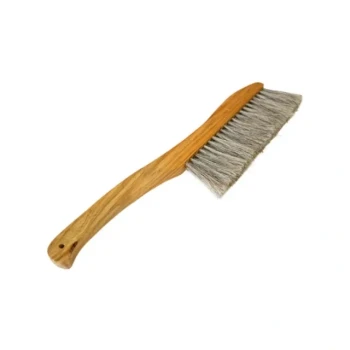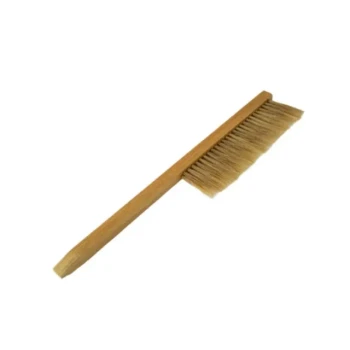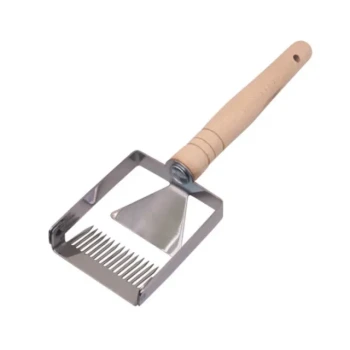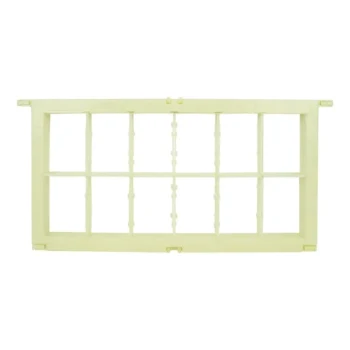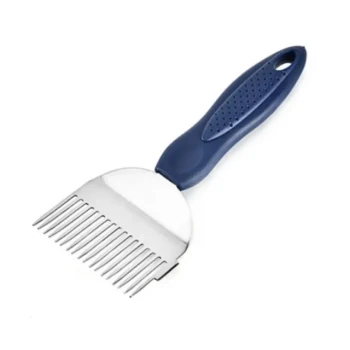The primary benefits of helping a beehive stay cooler are significantly improved colony health and productivity. By reducing the heat stress on a colony, you ensure optimal development of the next generation of bees and free up the existing workforce for essential tasks like foraging.
Managing hive temperature is not about providing comfort; it is about resource allocation. When you help bees cool their hive, you are conserving the colony's energy and water, allowing them to redirect those precious resources toward growth and honey production instead of basic survival.

Why Heat Stress is a Critical Issue for Bees
To understand the benefits of cooling, we must first appreciate the problem bees face. A honey bee colony must maintain the internal temperature of its brood nest within a very narrow range, typically 90-95°F (32-35°C), for eggs and larvae to develop properly.
The Work of Thermoregulation
When external temperatures rise, the bees must actively work to cool the hive. This is a demanding, resource-intensive process that dominates the colony's activity.
Bees use two primary methods: fanning and evaporative cooling. This requires a significant portion of the worker bee population to stop their other duties.
The Energy Cost of Cooling
Worker bees position themselves at the hive entrance and throughout the hive, fanning their wings to create airflow. This coordinated effort pushes hot air out and pulls cooler air in.
This fanning expends a tremendous amount of energy, which must be replenished by consuming honey or nectar—resources that could have otherwise been stored.
The Critical Need for Water
For evaporative cooling, forager bees collect water instead of nectar. They bring it back to the hive and spread thin layers of it on the comb, then fan their wings over it.
As the water evaporates, it cools the surrounding air, much like a swamp cooler. This process requires a constant and reliable water source, and a lack of one nearby adds immense stress to the colony.
The Tangible Benefits of a Cooler Hive
By implementing simple cooling strategies, a beekeeper can directly mitigate these stressors and unlock several key benefits for the colony.
Benefit 1: Enhanced Brood Development
The most critical benefit is ensuring the health of the next generation. Brood is extremely sensitive to temperature fluctuations.
An overheated hive can lead to developmental issues, a higher mortality rate for larvae, and a weaker, less robust generation of new bees. A stable, cooler temperature ensures a consistent and healthy brood cycle.
Benefit 2: Increased Foraging and Productivity
Every bee tasked with fanning or hauling water is a bee that is not out foraging for nectar and pollen.
Helping to cool the hive frees up this workforce. More foragers in the field directly translates to increased honey production and larger pollen stores, which are vital for feeding the brood.
Benefit 3: Reduced Colony Stress
A colony constantly fighting to regulate its temperature is a colony under significant stress. Chronic stress weakens the bees' immune systems, making them more susceptible to pests like Varroa mites and diseases.
In extreme heat waves, a stressed colony may even choose to abscond, abandoning the hive entirely in search of a more suitable location.
Practical Cooling Strategies
Assisting your bees does not need to be complex. A few proactive measures can make a substantial difference during the hottest months.
Provide Adequate Shade
Positioning a hive in a location that receives morning sun and afternoon shade is ideal. If that's not possible, creating artificial shade with a board, umbrella, or reflective cover during the hottest part of the day is highly effective.
Ensure Proper Ventilation
Proper airflow is crucial for allowing the bees' fanning efforts to work efficiently. Using a screened bottom board creates a "chimney effect" that helps hot air escape.
An upper entrance or a slightly propped-up outer cover can also dramatically improve ventilation without compromising the hive's security.
Maintain a Reliable Water Source
Placing a dependable water source near your hives is one of the most important things you can do.
A birdbath with stones or a shallow dish with marbles allows bees to drink safely without the risk of drowning. This saves them the energy and time of searching for water far from the hive.
Making the Right Choice for Your Goal
Your approach to hive cooling can be tailored to your specific beekeeping objectives.
- If your primary focus is colony growth: Prioritize stable temperatures through shade and ventilation to ensure healthy and consistent brood development.
- If your primary focus is honey production: Ensure a nearby water source and good airflow to free up the maximum number of foragers for nectar collection.
- If your primary focus is long-term survival: Use all cooling strategies as a key tool to reduce overall colony stress and minimize the risk of disease or absconding.
Ultimately, helping your bees manage heat is a cornerstone of proactive and successful beekeeping.
Summary Table:
| Benefit | Key Impact |
|---|---|
| Enhanced Brood Development | Ensures healthy larvae, leading to a stronger, more robust bee population. |
| Increased Foraging & Honey Production | Frees up worker bees from cooling duties, allowing more bees to collect nectar. |
| Reduced Colony Stress | Lowers risk of disease and absconding by conserving colony energy and water. |
Ready to implement effective cooling strategies for your apiary? HONESTBEE supplies commercial apiaries and beekeeping equipment distributors with the essential tools for success, including screened bottom boards for ventilation and other equipment designed to reduce hive heat stress. Let us help you boost your colony's health and productivity. Contact our wholesale experts today to discuss your needs!
Visual Guide
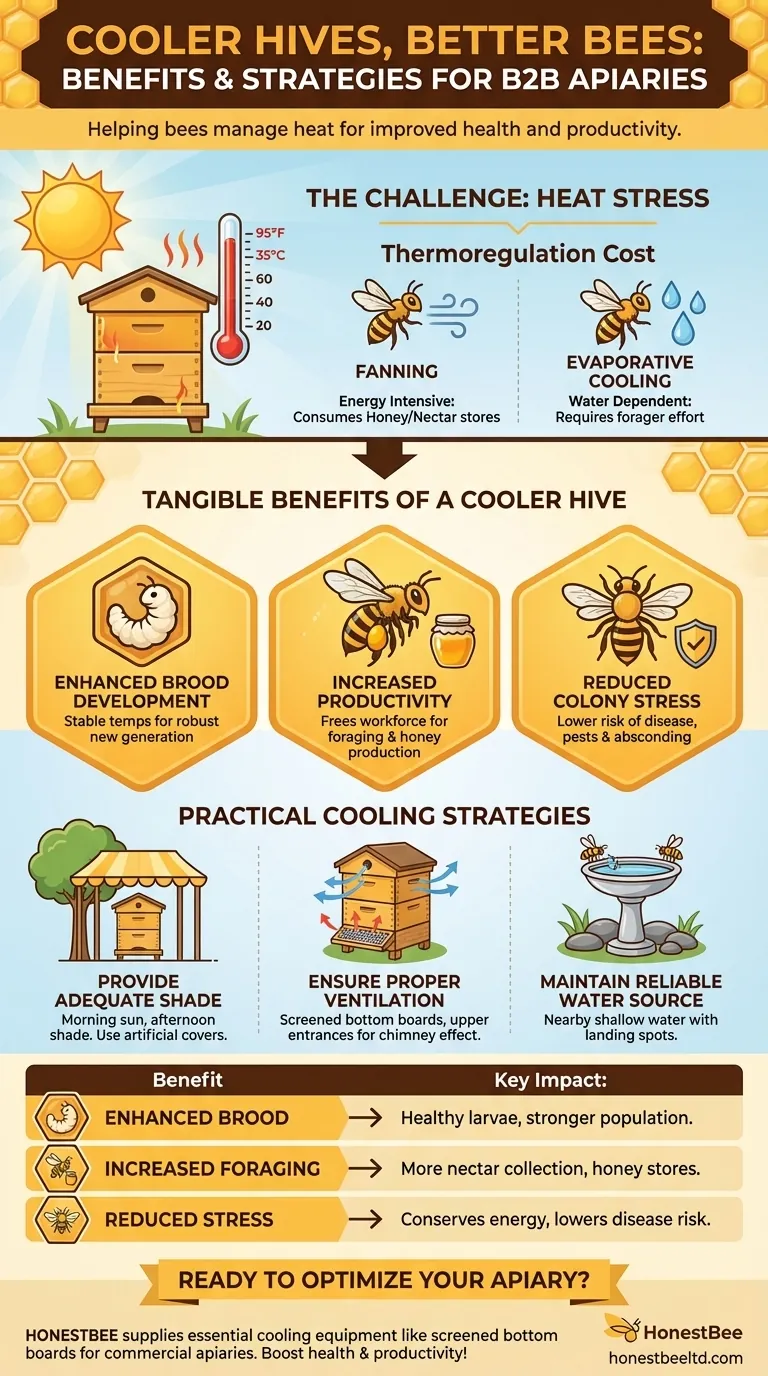
Related Products
- Professional Grade Foldable Beehive Handles
- Langstroth Screen Bottom Board for Beekeeping Wholesale
- Black Plastic Beetle Barn Hive Beetle Trap for Beehives
- Stainless Steel Triangle Support Honey Strainer and Filters
- Professional Hive Front Entrance Bee Feeder
People Also Ask
- What equipment is needed to start beekeeping? Your Essential Guide to a Successful Apiary
- Why is a bee brush important? Essential for Gentle, Safe Hive Management
- When should the first inspection of a new hive be conducted? Ensure a Strong Start for Your Colony
- What month do honey bees come out? Understand Their Spring Emergence & Activity Cycle
- How can beekeepers remember the timeline of bee development from egg to pupa? Use the 3-6-12 Rule.








